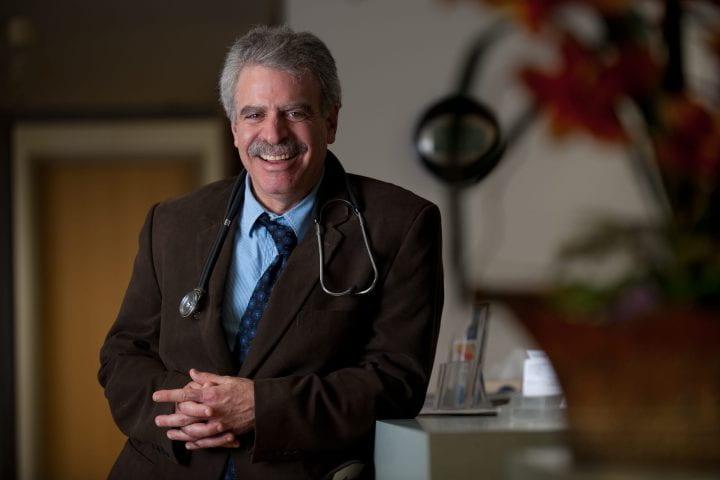Motion promotion
UCI center explores, extols health benefits of exercise in childhood

Dr. Dan Cooper believes that exercise can be the best medicine — so much so that he’s studying how specifically designed exercise programs for at-risk kids can help curb excessive weight gain, fight diseases and foster long-term fitness.
With childhood obesity and asthma emerging as national health crises, Cooper in 2006 founded UC Irvine’s Pediatric Exercise Research Center, and over the past six years, it has shed light on the full benefits of physical activity.
At any one time, PERC hosts 15 to 20 studies of how — and how much — exercise works to avert type 2 diabetes, limit asthma attacks, thwart arthritis, prevent cancer, encourage mineralization in growing bones, and improve the quality of life for kids with chronic diseases and congenital disorders.
“Our purpose is to recognize the importance of exercise for health and growth in children,” says Cooper, professor and chair of pediatrics at UCI and director of the Institute for Clinical & Translational Science, which supports PERC efforts. “We’re one of the few centers in the country to focus on this crucial issue.”
He and PERC’s associate director, gymnast Shlomit Aizik, maintain that exercise is necessary not only for good childhood health but also to prevent later-in-life maladies such as heart disease and stroke.
Cooper was one of the principal investigators for the nationwide Healthy study, which involved healthier cafeteria choices, longer and more intense periods of physical activity, and robust in-school education programs to lower rates of obesity and other risk factors for type 2 diabetes.
Besides its role in overall fitness, exercise also triggers biochemical mechanisms that activate anti-inflammatory cells and important growth factors, Aizik says.
PERC-supported research on these biochemical mechanisms opened the door to understanding the positive influence of physical activity on immune diseases — most commonly asthma and, to a lesser extent, arthritis, which is increasingly seen in obese children — while addressing a pressing question.
“How much exercise is too much?” Cooper says. “Too much can actually worsen these conditions. The challenge is determining the right ‘dose’ of exercise to achieve anti-inflammatory benefits without causing future harm. PE teachers are not trained for this, so we’re establishing programs to help schools properly integrate the correct amount of exercise.”
PERC researchers are also probing the impact of physical activity during key stages of child development. For example, studies show that diet and exercise are linked to proper mineralization in growing bones, which can stave off osteoporosis in middle and old age.
A PERC group is currently looking at the effects of exercise on infants born two to three months early, missing out on a phase of fetal life marked by lots of body-conditioning physical movement. “This is lost when babies are born prematurely, interfering with a critical growth period,” Cooper says.
His team has created an activity program to offset this deficit. It starts, he says, with passive manipulation of a newborn’s arms and legs and progresses over 12 months to include such motions as head lifting and crawling. After a year, researchers will assess the influence of the exercise on body composition, bone mineralization and additional developmental markers.
Another PERC effort — led by Aizik — seeks to increase physical activity among kids with congenital conditions. College students are being trained to engage spina bifida patients at Miller Children’s Hospital Long Beach in exercise.
“Youngsters with disabilities rarely get enough physical activity,” Aizik says. “And studies show that it improves and extends the quality of life for these children. We want to measure the psychological and physiological results of this mentor-based program to see how we can incorporate an appropriate amount of exercise into their lives.”